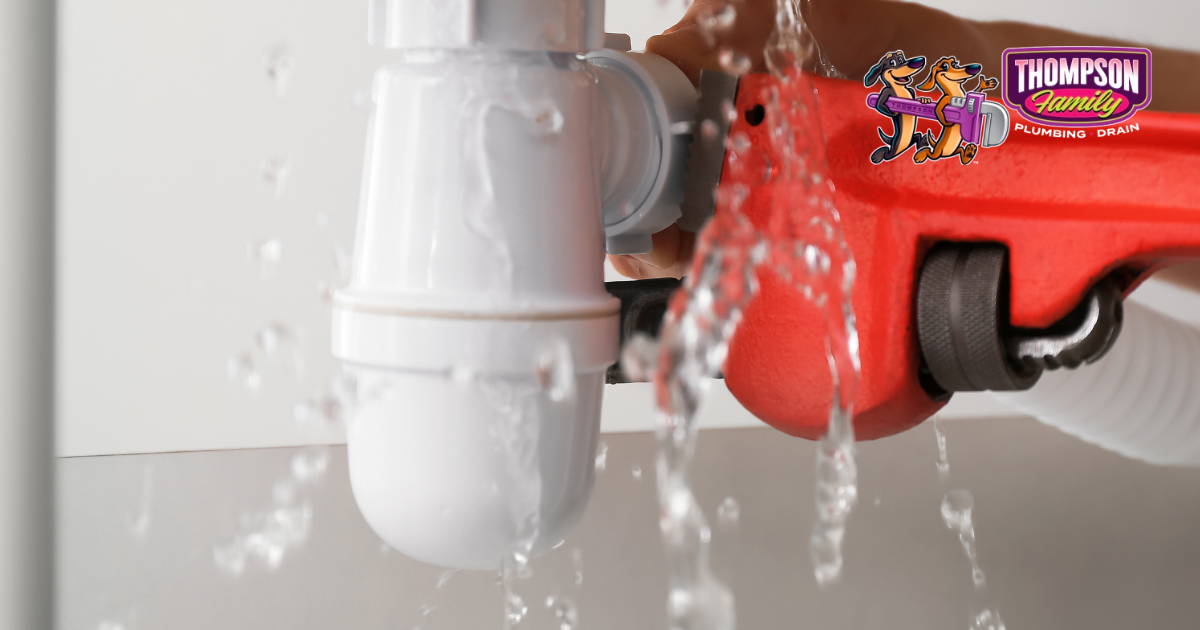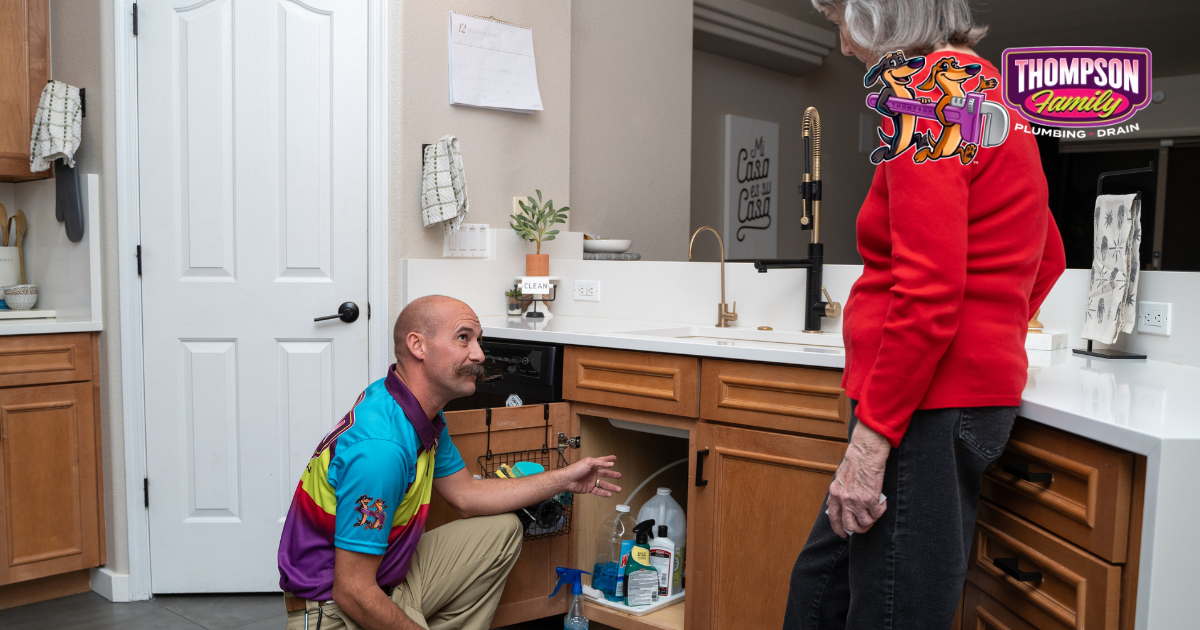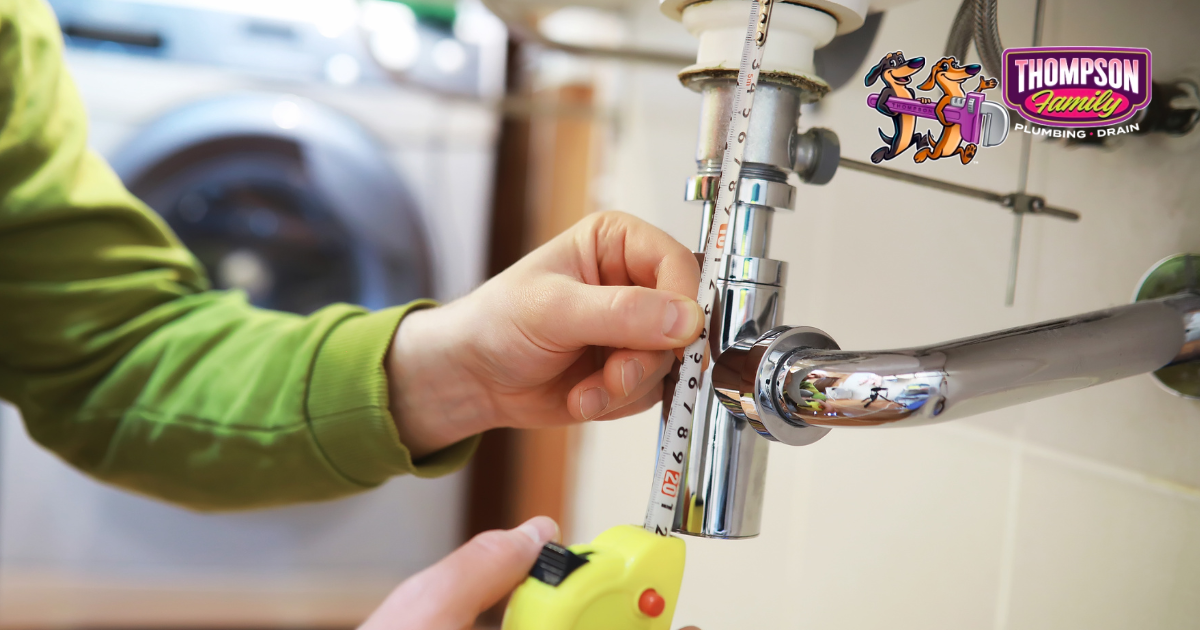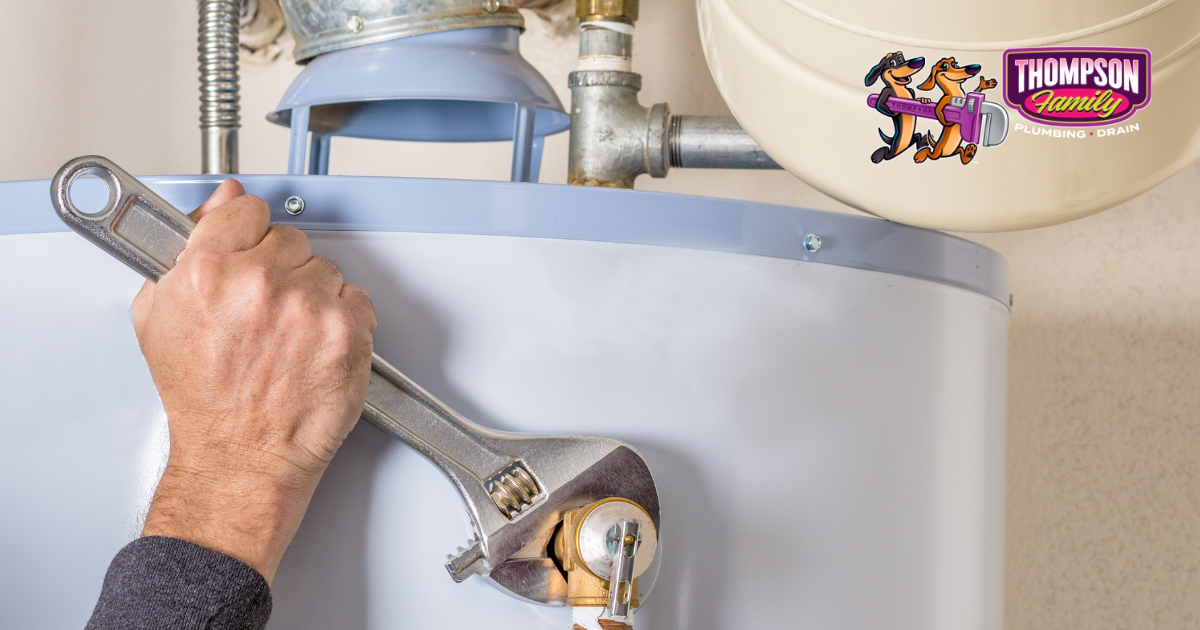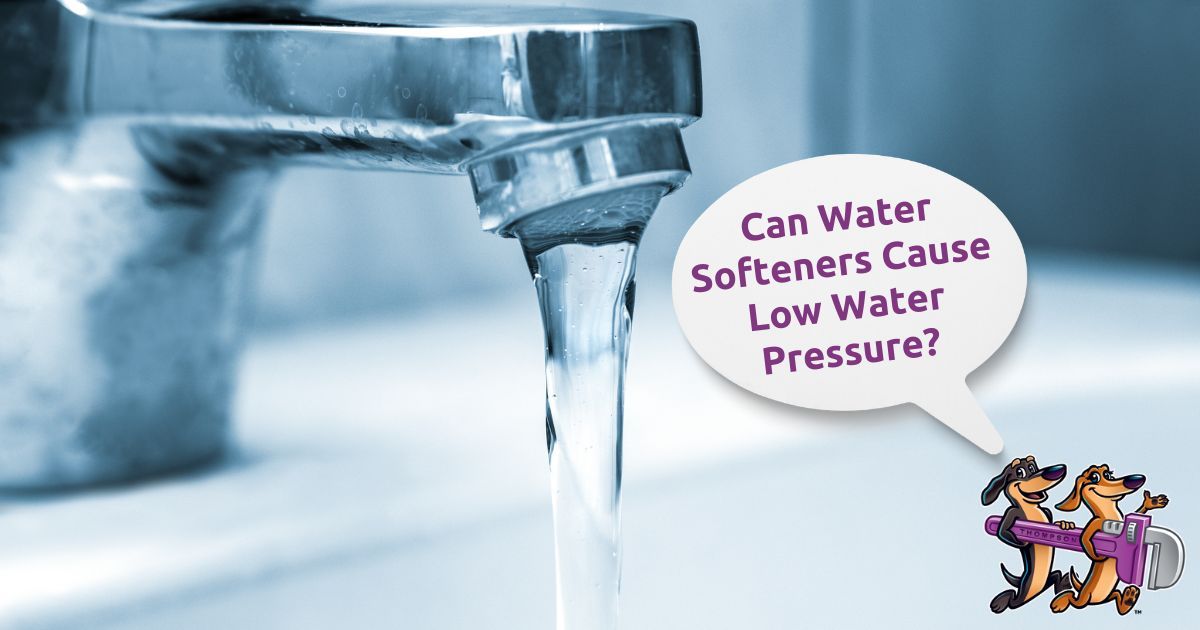Can Water Softeners Cause Low Water Pressure?
Thompson Family Plumbing is your go-to choice for residential plumbing repair and installation throughout Lake Havasu City, AZ and Hesperia, CA.

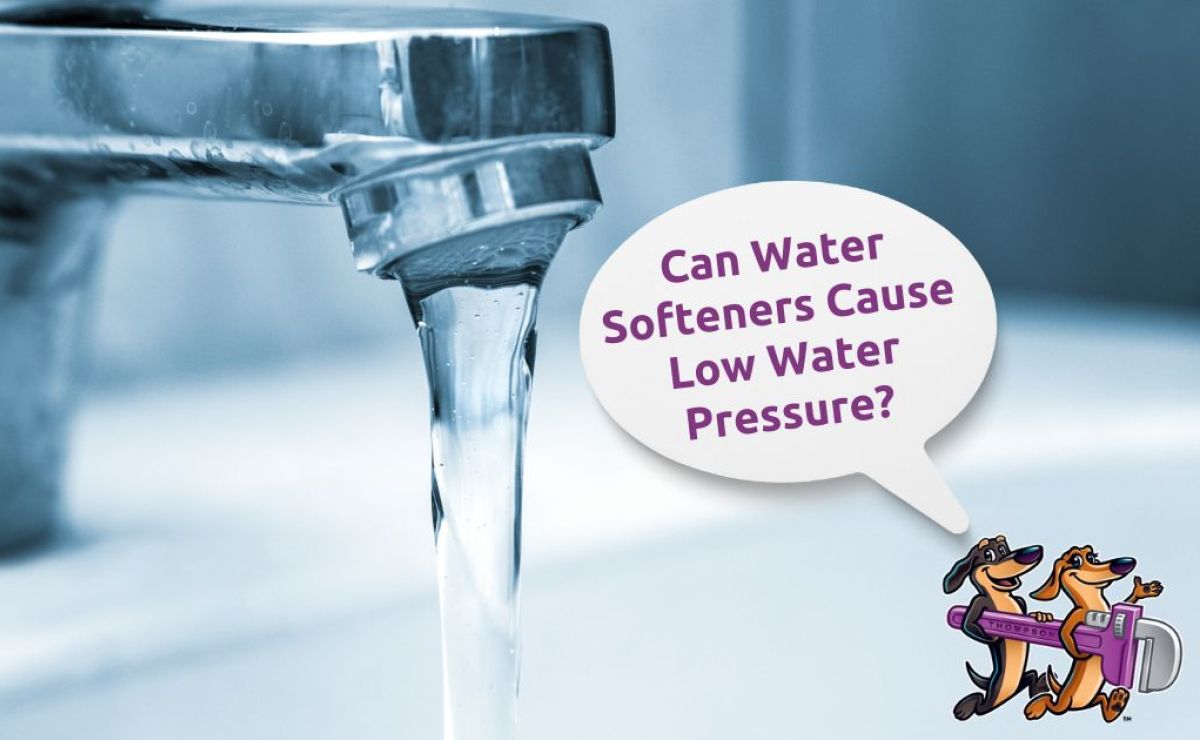
Understanding the Impact of Water Softeners on Water Pressure
Ever noticed a sudden drop in your shower’s water pressure, leaving you wondering if your morning routine needs to be adjusted?
You might not have to.
Often, the culprit behind these frustrating changes can be tied directly to your Lake Havasu City home’s water softener.
Getting to the root of this issue involves a bit of sleuthing and understanding how water softeners interact with your plumbing system.
Keep reading to unravel the mystery and learn how to keep your water flowing smoothly.
Key Takeaways
- Low Water Pressure Might Not Always Be Due to Your Water Softener
- Checking the Size of Your Water Softener Can Help Match Household Demand and Improve Water Pressure
- A Clogged Sediment Filter Can Drastically Reduce Your Water’s Flow Rate and Pressure
- The Resin Bed in Your Water Softener Could Be the Culprit Behind Low Water Pressure if It’s Clogged or Needs Regeneration
- Regular Maintenance and Inspections Can Prevent Resin Beads From Clogging Your Plumbing Fixtures
Start by Isolating the Issue
Okay, let’s get right to it.
You’re standing there, about to step into the shower when you notice the water pressure isn’t what it used to be.
It’s more of a gentle drizzle than the rejuvenating blast you were hoping for.
Before you go blaming your water softener or assuming it’s time to call in a professional, let’s break this down and troubleshoot step by step.
Let’s look out for telltale signs of low water pressure and see if ditching the water softener for a bit changes anything.
And hey, it might not hurt to ask around and see if your neighbors are getting dribbled on too.
That way, we can figure out if this is a solo adventure or a group experience.
Identify Signs of Low Water Pressure
So, you’re wondering if your morning shower has lost its mojo, and you suspect the culprit could be less-than-ideal water pressure, right? One quick way to tell is if it takes ages for your shampoo to rinse out, or if filling up the bathtub feels like you’re waiting for rain in a drought. That’s your first clue.
Another sign? Your kitchen faucet might be throwing you hints by not giving that powerful spray needed to blast the food off your plates. If your appliances that use water, like the dishwasher or washing machine, seem to be on a go-slow mission too, it’s definitely time to play detective:
- Check if the shower’s turned into a drizzle fest.
- See if the time to fill a pot in the kitchen has doubled.
- Notice if your appliances seem to be taking their sweet time.
Check if the Issue Persists Without the Water Softener
Alright, ditching the water softener for a bit might sound like a hassle, but trust me, it’s a game-changer in our little investigation. After turning off or bypassing your water softener, keep an eye on the water pressure during your next shower or when doing the dishes: Is there a noticeable difference, or is it the same old story?
| Before Bypassing Water Softener | After Bypassing Water Softener |
|---|---|
| Shower pressure weak | Noticeable improvement or no change? |
| Long time to fill pots | Quicker or still slow? |
| Appliances lagging | Performance boost or consistent? |
If there’s a sudden burst of energy in your water flow, we might have just pinpointed the culprit. But if the water’s shy flow remains unchanged, then our suspect list just got shorter, steering us away from blaming the water softener. Time to keep sleuthing and rule out other potential mischief-makers affecting your home’s water pressure.
Determine if Other Homes in the Area Experience Similar Issues
After doing all that detective work solo, it’s time to see if the mystery extends beyond your front door. Popping over to a neighbor’s place or shooting them a quick text can shed light on whether this low water pressure drama is a solo act or if it’s hitting the whole block. If everyone’s faucets are on a go-slow, it might just be a bigger issue than we thought.
Finding out that the Joneses next door, and possibly the entire street, are in the same boat ties the room together, doesn’t it? Suddenly, the plot thickens, suggesting that the water softener might just be a red herring, and our focus shifts to broader, possibly municipal issues. Besides, there’s comfort in numbers, and knowing you’re not alone can sometimes make the hassle a tad less annoying.
Alright, you’ve pinpointed the problem. Now, let’s throw a curveball – could your water softener be the mysterious culprit behind this mess? Let’s find out.
What if the Water Softener Is Involved?
So, we’ve been poking around the idea that water softeners might be the sneaky culprits behind the scenes, tampering with our water pressure.
To break it down, let’s zap right into understanding how these water softeners do their thing.
It’s like peeling an onion; we’ll uncover the layers by recognizing what screams ‘Hey, I’m a water softener affecting your pressure!’
Then, we’re suiting up for a little experiment.
We’ll roll up our sleeves and check out firsthand if twiddling with the water softener brings back that lost oomph to our showers and faucets.
It’s about turning detective, gathering facts, and connecting dots to see the full picture.
Understanding How Water Softeners Work
Alright, diving deep into how water softeners jive with our plumbing, imagine them as the unseen heroes (or villains, depending on the day) poised at the water’s edge. They’re there to tackle hard water culprits—think of minerals like calcium and magnesium—that love to party too hard in our pipes.
These softeners swap those hard minerals with something a bit friendlier, usually sodium. This swap-a-roo is done through a process called ion exchange. The hard minerals take a seat, and sodium takes their place: It’s like musical chairs at a microscopic level.
| Before Water Softener | After Water Softener |
|---|---|
| Water filled with hard minerals | Hard minerals swapped for sodium |
| Minerals causing buildup and blockages | Reduced mineral buildup, smoother flow |
| Pipes under pressure | Less strain on pipes? |
Recognizing Common Indicators Related to Water Softeners
Spotting the sneaky signs that a water softener might be messing with your water pressure feels a bit like being a detective, doesn’t it? Well, if you’re suddenly finding your skin feeling a tad slicker after showers or your water tastes a bit salty, that’s your water softener waving a big, “Hello!” These changes mean it’s working, but they could also hint at it working a little too well, causing a hiccup in water flow.
And then there’s the moment you realize your once forceful garden hose now weeps like it’s lost its will to spray. That’s when you gotta wonder if your water softener is pulling a bit too hard on your home’s water pressure. It’s subtle, but when your plants are getting a mist instead of a shower, it’s time to pay attention to what’s happening behind the scenes.
Steps to Confirm the Water Softener’s Impact on Water Pressure
So, you’re suspecting your water softener has turned into a bit of a water pressure party pooper. To get to the bottom of this, think about doing a simple test. Just for a couple of days, bypass or completely shut off your water softener. It’s a bit like playing hide and seek with your water flow; let’s see if it comes back strong without the softener in the loop.
After giving it a go without the softener, keep a keen eye on how your morning shower feels or if the kitchen sink finally gets its groove back with a stronger spray. It’s like conducting a mini science experiment right in your own home. If there’s a noticeable jump in pressure, you’ve just cracked the case on who the culprit might be. If not, well, at least we’ve ruled out one suspect, right?
So you suspect your water softener’s at the heart of your woes? Buckle up because the real twist is—it’s simply not big enough to tackle the job.
Your Water Softener Is Just Too Small
Picture this: you’ve just realized your morning showers are more whimper than roar, and after a bit of sleuthing, you’re starting to suspect your water softener’s playing a part.
But here’s a twist – maybe it’s not the softener’s fault per se, but its size that’s throwing a wrench in your waterworks.
That’s right, the size of your water softener can seriously mess with your water pressure, especially if it’s too small for the demands of your household.
So, how do you figure out if your softener is the runt of the litter or if it’s up to snuff?
Well, buckle up.
We’re going to dive deep into the importance of matching your water softener’s size to your needs, work out the math to pinpoint the perfect fit, and explore some savvy ways to upgrade your system if it turns out size really does matter.
Hang tight, because we’re about to demystify the whole size and pressure puzzle.
How the Size of a Water Softener Affects Water Pressure
So, here’s the scoop on why the size of your water softener can really throw your water pressure for a loop: If you’ve got a pint-sized softener serving a household that gulps water like there’s no tomorrow, you’re bound to hit some bumps. It’s all about capacity and demand. Imagine inviting a football team to a barbecue and only cooking one burger – it just doesn’t add up!
- Picture it: your too-small water softener is working overtime, but can’t keep up.
- The minerals it needs to swap out stack up, creating a bottleneck.
- Water struggles to make it through, reducing the flow to your taps and showers.
And there’s this thing: The right-sized softener balances the water flow seamlessly. Without enough grunt behind it, though, water pressure drops, leaving you wondering why your showers feel more like a soft patter than the invigorating cascade you crave. It’s like trying to run a marathon with one shoe – possible, but far from ideal.
Calculating the Correct Size Needed for Your Household
Figuring out the right size for your water softener starts with some homework, and I’m not just talking about leafing through manuals. You need to estimate how much water your household guzzles daily. Determining this involves checking out the number of people in your home and multiplying that by the gallons each person typically uses. Trust me, it’s less about math skills and more about getting a clear picture of your water usage patterns.
Once you’ve got a handle on your daily water use, it’s time to take a peek at the hardness level of your water. This bit might require a test kit or a call to your local water provider for the scoop. Knowing how hard your water is, combined with your consumption stats, gives you the magic numbers needed to pick a water softener that can handle the load without breaking a sweat. Think of it as matchmaking but for your plumbing system.
Solutions for Upgrading Your Water Softener System
If you’ve nodded along, realizing your water softener’s size might just be the bottleneck in your home’s water pressure saga, upgrading could be your golden ticket. Taking the plunge into a larger system isn’t just about splurging; it’s an investment in bringing back those robust showers and briskly filled pots. I hear you; thinking about upgrades can be daunting, but picture the peace of settling into a consistent, satisfying water flow – it’s like upgrading from a jittery scooter to a smooth-sailing sedan.
Now, during my own quest for better water pressure, I discovered that reaching out to a professional for advice was a game-changer. These pros can evaluate your current system, peek at your water usage, and recommend a tailor-made solution. It’s not just about picking a bigger model off the shelf; it’s about crafting your home’s perfect water flow puzzle. Sure, it’s an extra step, but believe me, marrying your home to the right-sized water softener transforms your water woes into water wins!
Just when you thought you had it all figured out with the water softener, a new challenger appears! Buckle up, because now we’re dealing with a clogged sediment filter.
A Sediment Filter Is Clogged
Picture this: after troubleshooting, pondering, and maybe a little bit of grumbling about your water pressure woes, you stumble upon a likely suspect—your sediment filter.
Yep, tucked away in the mechanics of your water softener, this guy plays a key role in keeping things running smoothly, like a bouncer keeping the riff-raff out of a club.
But when it gets clogged, oh boy, does it put a damper on your flow.
Recognizing the signs of a clogged filter isn’t rocket science—a drop in pressure here, a slow faucet there.
Cleaning or swapping out that sediment filter might just be the next step in our water pressure revival journey.
So, let’s roll up our sleeves and dive into the nitty-gritty of sediment filters, how they impact our search for the lost oomph in our water, and what it takes to get things flowing smoothly again.
The Role of Sediment Filters in Water Softeners
Ever wonder why your water softener has that little extra box or compartment you always forget about until it’s too late? That’s the sediment filter, a real unsung hero in the saga of keeping your water clean and your pressure up to snuff. It’s like the bouncer of your water system, checking each particle at the door to make sure only the clean, good stuff gets through to your pipes and appliances.
Now, here’s where it gets interesting: when that filter does its job a little too well, it collects all sorts of gunk, from sediment to tiny bits of who-knows-what. This collection can turn into a clog fest pretty quickly, putting the brakes on your water flow and leaving you with a sad trickle instead of that mighty river you’re used to:
| Before Clog | After Clog |
|---|---|
| Water flows freely | Gentle trickle, a shadow of its former self |
| Appliances and showers at full power | Pressure drop, appliances and showers sputter |
| Filter working quietly in the background | Filter clogged, crying out for help |
Symptoms of a Clogged Sediment Filter
Spotting when a sediment filter decides to blockade your water flow isn’t exactly something you need a detective badge for. Picture this: you’re merrily going about your business, and suddenly, water’s barely making a guest appearance at your faucet or shower. It’s one of those moments when you know something’s up, signaling it’s high time to peek at that sediment filter.
Another tell-tale sign that screams ‘clogged sediment filter’ louder than my neighbor’s karaoke night is when your appliances start acting up. Imagine your dishwasher or washing machine taking forever to fill up, almost like they’re on a slow-motion setting. It’s not them getting old or lazy; it’s most likely that clogged filter working its mischief on your water pressure.
Cleaning or Replacing the Sediment Filter
So, we’ve figured out a sediment filter gone rogue can tank our water pressure, turning our daily shower into a mere sprinkle. Here’s the twist: Cleaning or replacing it isn’t a Herculean task. I tackled mine with a bit of online guidance and some trusty tools, and guess what? The pressure was back, making mornings great again.
- I noticed a drop in water pressure – our first hint something’s up.
- Pulled up a tutorial on sediment filter maintenance (YouTube is your friend).
- Decided to give cleaning a shot first, but had a replacement filter on standby.
- Turned off the water supply (because nobody wants an indoor pool).
- Removed the filter, cleaned it meticulously, and reinstalled it (or swapped it with the new one).
- Turned the water back on, holding my breath for the moment of truth.
And let me tell you, the difference was night and day. It was like my plumbing had gone from a congested highway to an open freeway. For anyone staring down a water pressure issue, peeking at that sediment filter might just be your golden ticket. Plus, there’s something oddly satisfying about fixing a piece of your home’s puzzle by yourself.
Boom, your detective work isn’t done yet! The adventure thickens as we hurdle from a jammed sediment filter straight into the clutches of a clogged resin bed.
Frequently Asked Questions
How can I identify the cause of low water pressure in my home?
Oh, low water pressure, that dreaded dribble when you’re looking forward to a powerful shower. Identifying the cause? It could be anything from a simple clogged filter to more complex issues like a hidden leak or even municipal supply problems.
Let’s kick things off with the basics. Check if the low pressure is a house-wide issue or just isolated to one spot. If it’s just your kitchen tap acting up while the shower blasts water like Niagara Falls, you might just need to clear that faucet’s aerator or filter. These little components can clog up with sediment over time, slowing water to a trickle.
Now, if the whole house is suffering, it’s time to look deeper. Your main water valve should be your first stop; a partially closed valve can choke off your home’s water supply more effectively than a thumb on a garden hose. This valve, sometimes found in odd places like a basement or even buried outside, might have been unintentionally nudged almost shut during some other household task.
Another suspect in this mystery could be your water pressure regulator. This little gadget, which not all homes have, helps keep your water pressure from breaking your pipes. If it fails, your water pressure might drop or skyrocket. Both are bad news.
Leaks are the ninjas of low water pressure causes—silent, stealthy, and potentially devastating. Even a small leak can rob your home of pressure, and by the time you find it, you might be dealing not just with dribbles from your faucet but a hefty repair bill. So, keep an eye out for unexpected increases in your water bill or damp patches that could clue you in on these unwelcome visitors.
Last but not least, it might not even be your home at fault. Sometimes, the issue lies with the city’s supply. Infrastructure work, pipe breaks, or simply low-pressure issues in your area can affect your home. A quick call to your neighbors or your local water supplier can help pinpoint if the problem is beyond your property line.
Tackling low water pressure is like being a detective. You start with the obvious clues and work your way into the hidden nooks and crannies of your home’s plumbing system. Sometimes it’s a quick fix; other times, you might need to call in the cavalry (aka professional plumbers). Either way, understanding where to start looking can save you time, money, and many watery headaches.
Could my water softener be responsible for the decrease in water pressure?
Oh, absolutely! If your showers have started feeling more like a drizzle and the kitchen tap seems to barely muster a trickle, your water softener could indeed be the sneaky culprit behind that frustrating drop in water pressure. You see, over time, these units can accumulate minerals or develop clogs, which kind of act like a bottleneck, stunting the flow of water and leaving you questioning whether you accidentally wandered into the Sahara every time you turn a faucet.
What should I do if my water softener is undersized for my household’s needs?
If you discover that your water softener isn’t quite keeping up with your household’s demands, it’s like realizing your favorite sweater has suddenly shrunk. It just doesn’t fit anymore. The knee-jerk reaction might be to panic, but hold that thought. You’ve got options, and they’re not as daunting as you might think.
First off, reassess your family’s water usage. Think about those extra-long showers someone might be taking or that dripping faucet you’ve been meaning to fix. Sometimes, tweaking our habits can ease the load on our water softener without the need for an upgrade.
But, if after all that recalibrating, your water softener still feels like it’s running a marathon in flip flops, it’s probably time to face facts. You need a bigger unit. This isn’t a defeat; it’s an opportunity. Imagine smoother skin, cleaner dishes, and a happier household. Yeah, that’s the dream, right?
Finding the right size can feel like solving a puzzle with missing pieces. You’ll need to consider how many people are in your household, your daily water consumption, and the hardness of your water. It’s a bit like baking a cake. You need the right mix to get the perfect rise.
But hey, don’t go at it alone. Grabbing advice from a professional can save you a ton of guesswork. They can help you calculate your needs precisely and suggest a model that fits like a glove. Plus, they’ll probably have some tips on installation and maintenance that will save you headaches down the line.
In the end, adapting to your growing needs is all part of the homeownership journey. Whether it’s a water softener or something else, there’s always a solution. And who knows? This little hiccup might just be the push you needed to make your home more efficient and comfortable. So, chin up, and let’s tackle this head-on. With a bit of planning and the right help, you’ll have your water situation flowing smoothly in no time.
How can a clogged sediment filter impact water pressure in my home?
Oh, tackling a clogged sediment filter? That sneaky little thing can really throw a wrench in your home’s water flow, making your once powerful shower feel more like a drizzle. It’s like trying to drink a milkshake through a coffee stirrer—frustrating and downright unsatisfying.
Conclusion
Water softeners, designed to remove hard minerals and replace them with sodium, can sometimes become a source of water pressure issues due to various factors such as size mismatch, clogs, or worn-out parts.
Whether it’s bypassing the water softener, cleaning or replacing sediment filters, regenerating or replacing the resin bed, or addressing escaped resin beads clogging fixtures, taking timely action based on understanding the connection between water softeners and water pressure is crucial.
Regular checks, maintenance, and appropriate upgrades of your water softener system play a significant role in ensuring a steady and rejuvenating water flow throughout your household, ultimately enhancing your daily water usage experience.

Devynn Thompson
What Our Valued Customers Are Saying
-
“Always go above and beyond for their customers”
Once again Thompson Family Plumbing came in and took care of us as if we were their family. They always go above and beyond for their customers and make you feel like you are important to them. I can’t thank them enough for coming in and taking care of the issues that I had with my home as quickly as they did. Absolutely the best plumbing company around. Thank you, John and Devynn for everything.
-Nicole H.
-
“Price was more than reasonable, especially last minute”
What a great local family company. Had a little issue today (Saturday). Gave them a call. The lady said she would have someone here between 3 & 5. It was at 1 when I called. 3:00 on the nose Don was here. Don was very friendly and had the broken pipe fixed in no time at all. The price was more than reasonable, especially last minute on a Saturday.
-Andy S.
-
“Fantastic job of analyzing the situation and making all the necessary repairs”
Thank you Thompson Family Plumbing for your quick and professional service. Don did a fantastic job of analyzing the situation and making all the necessary repairs. Clients were happy with the professionalism and knowledge that Don possessed in getting the job done. Ashley went out of her way to ensure that an appointment was made asap for the clients.
-Richard B.
-
“Took care of it in no time”
Plumbing technician Dean Taylor came over last week to set up a line so I could get a dishwasher installed. I didn’t have the proper setup but he took care of it in no time! Now the installers will have no problem doing it. He was very knowledgeable and professional. I will definitely have him come back for other plumbing jobs. From start to finish everyone I spoke to was very helpful! Their customer service is outstanding!
-Jackie L.
-
“Gave me great peace of mind”
Great experience with TFP! They were super professional and friendly, exactly on time, fixed the issue, AND were inexpensive. I received a text when to expect them with a picture of my two technicians (Dean & Kade) AND their license numbers included in the text. This gave me great peace of mind as I am a woman that lives alone. I highly recommend Thompson Family Plumbing!
-Brisa A.
-
“Integrity and honesty”
I cannot say enough good things about this amazing company. We found them through reading other people’s reviews on Yelp. They have helped us with a plumbing issue and installing a new hot water heater. They are prompt, reasonable, and incredibly helpful. John’s integrity and honesty along with the rest of the crew would make it a pleasure to recommend to anyone and everyone.
-Joyce A.
